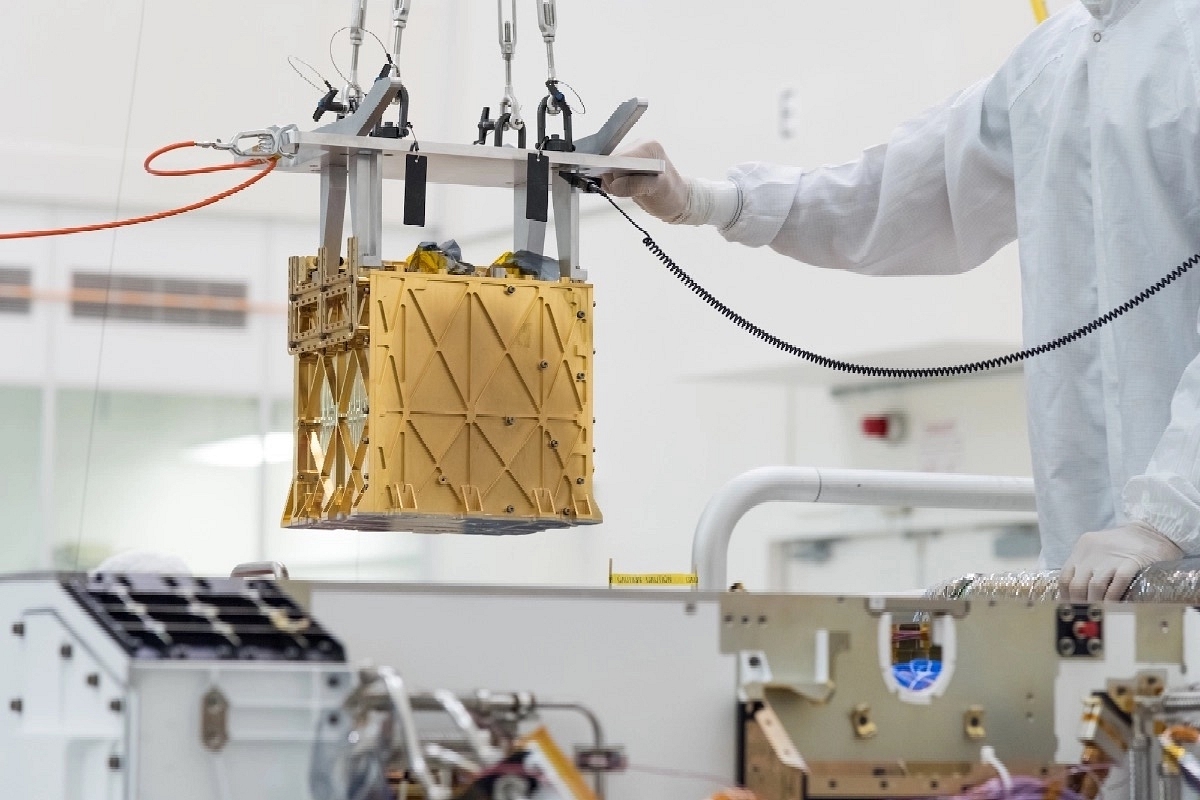Science
NASA Instrument Produces Oxygen From Mars' Carbon Dioxide-Rich Atmosphere, To Be Scaled Up To Support Future Exploration

NASA's MOXIE (Pic Via NASA Website)
A small instrument on NASA's Perseverance Mars Rover managed to generate about 100 minutes' worth of breathable oxygen since last year and will now be scaled up to support future human exploration of the Red Planet.
MOXIE - a lunch box size instrument producing Oxygen on Mars
Since April last year, the Mars oxygen in-situ resource utilisation experiment (MOXIE), a lunchbox size instrument on the NASA rover, has been successfully making oxygen from the red planet’s carbon dioxide-rich atmosphere.
MOXIE began oxygen production on Mars about two months after it touched down on the Martian surface as part of NASA’s Perseverance rover and Mars mission in February 2021.
MOXIE does the work of a small tree
In a study published in the journal Science Advances, researchers report that, by the end of 2021, MOXIE was able to produce oxygen on seven experimental runs, in a variety of atmospheric conditions, including during the day and night, and through different Martian seasons.
In each run, the instrument reached its target of producing six to eight grams of oxygen per hour - about the rate of a modest tree on Earth.
Over the course of seven hour-long production runs during 2021, MOXIE was able to reliably produce roughly 15 minutes of oxygen per hour in a variety of harsh planetary conditions, reports New Scientist.
The instrument produced around 50 grams of oxygen in total – about 100 minutes’ worth of breathable oxygen for a single astronaut - in the seven runs.
How does MOXIE work?
MOXIE draws the Martian air in through a filter that cleans it of contaminants.
The air is then pressurized, and sent through the Solid OXide Electrolyzer (SOXE), that electrochemically splits the carbon dioxide-rich air into oxygen ions and carbon monoxide.
The oxygen ions are then isolated and recombined to form breathable, molecular oxygen, or O2, which MOXIE then measures for quantity and purity before releasing it harmlessly back into the air, along with carbon monoxide and other atmospheric gases.
MOXIE could accommodate shifts in the planet's atmospheric conditions
MOXIE engineers have started up the instrument seven times throughout the year, each time taking a few hours to warm up, then another hour to make oxygen before powering back down.
Each run was scheduled for a different time of day or night, and in different seasons, to see whether MOXIE could accommodate shifts in the planet’s atmospheric conditions.
So far, MOXIE has shown that it can make oxygen at almost any time of the Martian day and year.
However, a demonstration to run the instrument at dawn or dusk, when the temperature changes substantially, is yet to be conducted. “
Future MOXIEs to be bigger, better
The NASA team is now looking to create a bigger version of the device, which would produce not only enough life support for a crewed Mars mission, but also enough oxygen to propel a return rocket to Earth.
At that capacity, the system should generate enough oxygen to both sustain humans once they arrive, and fuel a rocket for returning astronauts back to Earth.
Support Swarajya's 50 Ground Reports Project & Sponsor A Story
Every general election Swarajya does a 50 ground reports project.
Aimed only at serious readers and those who appreciate the nuances of political undercurrents, the project provides a sense of India's electoral landscape. As you know, these reports are produced after considerable investment of travel, time and effort on the ground.
This time too we've kicked off the project in style and have covered over 30 constituencies already. If you're someone who appreciates such work and have enjoyed our coverage please consider sponsoring a ground report for just Rs 2999 to Rs 19,999 - it goes a long way in helping us produce more quality reportage.
You can also back this project by becoming a subscriber for as little as Rs 999 - so do click on this links and choose a plan that suits you and back us.
Click below to contribute.
Latest